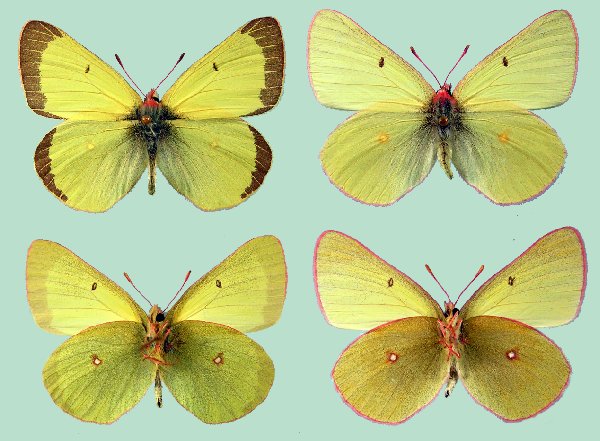Colias scudderi scudderi

Photo Life History: Colias scudderi scudderi
Habitat: Arctic Alpine
Host Plants: Salix planifolia
Suitable Lab Host Plants: Salix exigua (Post-diapause)
Caring for Live Female Butterflies: Feed females regularly
Methods of Female Oviposition: Portable Cages; Open Screen Cages
How to Find Eggs:
How to Hatch Eggs: Separate eggs individually; Keep egg on original leaf
How to Find Caterpillars in the Field:
Caterpillar setups: Open terrariums;
Larva to Pupa: Last instar larva constructs a cremaster and girdle.
How to Find Pupae in the Field:
Number of Broods per Year: 1
Overwintering Stage: Third Instar Larva
Overwintering Strategies: Alpine Overwintering Technique
Post-Hibernation Strategies: Provide larvae with fresh host plant.
Avoiding Diapause Techniques: Not generally productive. When exposing larvae to 24 hours of light, a very small percentage fed through to adult. (See Field Notes below.)
Disease Prevention: Change out host plant and remove frass every two to four days. Jack Harry notes that Colias larvae can get sick if not properly taken care of in the lab.
Emergence: Emergence Container
Field Notes: Nicky Davis reared this butterfly and here are her notes from 2008.
Two females located by Todd Stout
on Murdock Mountain. On July 27, 2008, Jack Harry, Les Davis and I located two
females past mm 27 along the Mirror Lake Highway, Duchesne County, Utah. All
females were returned to the same area after we obtained these eggs. N.
40.40.881, W. 110.55.165 Elevation 10,349 feet
Ova
These females oviposited 160 ova on an unknown Vaccinium within a couple of
days. They hatched after four days.
Larva
We put the larvae on Salix exigua (Brush Willow) which they refused to feed on,
and all but 50 died. We moved the surviving 50 larvae to Diamondleaf Willow,
Salix planifolia which was growing at the same location in which the females
were flying. The larvae fed on that plant just fine. I kept them under light
24x7, nevertheless they all hibernated except one.
Host
The females oviposited on an unknown Vaccinium and the larvae fed on D. Willow
- Salix planifolia. After hibernation,
they fed on Salix exigua.


